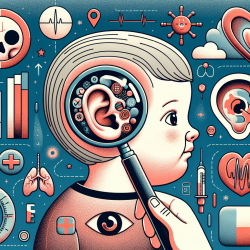Understanding the Impact of Stigma in Health Facilities
Stigma in health facilities is a pervasive issue that can severely impact patient care and health outcomes. According to a comprehensive study titled "Stigma in health facilities: why it matters and how we can change it," stigma can lead to the denial of care, substandard treatment, and even abuse. This blog post explores the key findings of this research and provides actionable insights for practitioners seeking to reduce stigma in their healthcare settings.
The Importance of Addressing Stigma
Stigma in health facilities not only affects patients but also healthcare workers. It can prevent individuals from seeking necessary care, exacerbate health conditions, and create a hostile work environment for healthcare providers. The research highlights that stigma is a barrier to care for individuals with HIV, mental illness, substance abuse disorders, and other health conditions. Addressing stigma is crucial for improving healthcare access and outcomes.
Key Strategies for Stigma Reduction
The research identifies several effective strategies for reducing stigma in health facilities:
- Information-Based Approaches: Educating healthcare providers about the conditions and stigma can reduce negative attitudes and misconceptions.
- Skills-Building Activities: Providing opportunities for healthcare providers to develop skills in managing stigmatized conditions can improve care quality.
- Participatory Learning: Engaging healthcare providers and patients in interactive learning experiences can foster empathy and understanding.
- Contact with Stigmatized Groups: Facilitating interactions between healthcare providers and individuals from stigmatized groups can humanize patients and break down stereotypes.
- Structural or Policy Changes: Implementing policy changes and restructuring facilities can create a more inclusive and supportive environment.
Gaps and Opportunities for Further Research
Despite the progress made, there are still gaps in stigma reduction efforts. The research highlights the need for interventions that target multiple health conditions simultaneously and involve all levels of healthcare staff. Additionally, leveraging technology for interactive learning and addressing stigma experienced by healthcare workers themselves are areas that require further exploration.
Conclusion
Reducing stigma in health facilities is essential for improving healthcare outcomes and creating a more equitable healthcare system. By implementing the strategies outlined in this research, practitioners can make significant strides in reducing stigma and improving the quality of care provided to patients.
To read the original research paper, please follow this link: Stigma in health facilities: why it matters and how we can change it.










